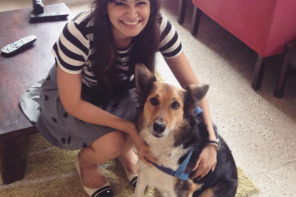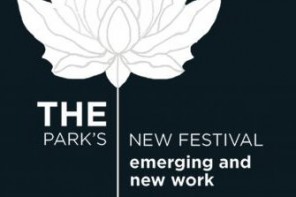Imagine yourself waiting at the outside of a library. “What’s so different about this one?” you may ask. You take your first step inside, only to find that there aren’t any books there. “A library without books is a library of what?” is your immediate question. Just then a friend of yours finds a box with your late grandmother’s name carved at its bottom. She died when you were two. You have absolutely no memory of what she looked like. Or what she ate for breakfast or whether she put on those fake teeth. All you remember is her name which now you can see written on a box, sitting in a library in the middle of nowhere. With great curiosity, you press the ‘play’ button. Suddenly, the entire library fills with voice of a lady who sounds like someone in her seventies. “That must be her!” you exclaim. Throughout the next half an hour, everyone present in the library listens to your grandmother’s experience serving as a nurse in the Vietnamese war. She talks about how about a boy named Tenzin died in her arms. And how she laboured his dead body for two entire days, hoping for even a little bit of life force to push his heart back to work. After the tape ends, you look at your friend and tell her, “It’s a library of voices”.
Guess what? This figment of my imagination has already been put to work in the real world.
On just another Thanksgiving, a young boy sat around a table with his grandfather Abe, grandmother Rose and her sisters. After dinner, little David found a tape recorder lying around and somehow, got the idea to interview these elders. He didn’t have a clue about what he was doing but he recorded their voices and stories. And he saw how much they loved being listened to. Even today, when the adult David visits this house, he searches for that tape. It would make him so happy to hear those voices. And make his children listen to them. When asked a little more about this incident David says,
“You know doing that recording really taught me something. You can find the most amazing stories from regular people. All you have to do is ask them about their lives and listen. (Really? That’s it?) Yes. It’s simple. We can learn so much about the people around us. Even about the people we already know; just by taking out time to have a conversation. And if you pay just a little attention you will find wisdom and poetry in their words. (Do people really want you to ask you about their lives?) Yes. Most people love being listened to because it tells them how much their lives matter. Listening closely is simple. When you are curious treat people with respect and have a little courage to ask the important questions. Great things are going to happen.”
The people of the 21st Century recognise this very adult David Isay as a longtime audio documentarian and a voice familiar for any American who has listened to public radio in the last 15 years. The little David is known to the world as the founder of the ‘library of voices’ or Storycorps– a non-profit organisation whose mission is to ‘record, preserve and share the stories of Americans from all backgrounds and beliefs’.
But where do these voices come from? Does David have spies moving all around New York and secretly recording conversations between two people? Does he tap your cell phone conversations at 2 in the night? Well, turns out he has worked out a process that is more personal and less intrusive.
When David opened the first StoryBooth, a small, publicly accessible recording studio at the Grand Central Terminal in October 2003, his aim was to invite people to have an incredibly intimate conversation with another human being in one of the busiest places in the world. Those who visited this booth could be friends, family members or mere acquaintances. A facilitator at the booth would guide them through the interview process. Inside the booth, surprisingly, people became more open. They thought of the conversation as the last one and wondered what they might have to ask of or to say to this person sitting next to them. They began to share stories that had never made it to anyone’s ears before.
Sometimes, one would wish to enter the booth alone. In such a case, the facilitator present there asked you certain personal questions and acted like the second end of the conversation. At the end of the 40 minute session, you were provided with a CD of your interview and requested to make a $50 donation to meet the recording costs. Today, many of these Storybooths can be found eagerly waiting for a conversation in every American state.
With the participant’s permission, another copy of the interview is archived at the American Folklife Center at the Library of Congress for future generations to listen to. The interviews are also accessible on the StoryCorps website and certain segments air nationally on the public radio. If one visits the organisation’s channel on Youtube, one will find certain interviews having been converted into beautiful animated narratives by The Rauch Brothers.
Make sure you listen to an intimate interview where Danny and Annie recollect the memories of their 27 year romance; right from their first date to Danny’s death due to terminal cancer. Danny died on the day this interview aired on public radio. Later Annie received thousands of letters offering condolences from the listeners. She reads one each day in place of her husband’s love letters.
The trained facilitators who travel the country in order to gather this human wisdom describe the whole experience as ‘bearing witness’. And if you ask them about the most important thing they’ve learned from being present during the interviews is that people are basically good. While addressing a gathering David said, “During the initial years of StoryCorps, one could argue that some kind of selection bias was happening. But after tens of thousands of interviews with every kind of person in every part of the country- rich, poor, 5 years old to 105, 80 different languages- you have to think that maybe these guys are actually onto something.”
To record the lives of those who can’t visit these StoryBooths, David has chalked out several other methods. Two MobileBooths travel all across the country throughout the year to collect conversations. The Door-to-Door Service sends a team of facilitators to temporary recording locations. The Storykit Service sends a professional quality portable recording device to participants. The “Do-It-Yourself” Service explains the interview process to those with their own recording devices.
You may be wondering, “What about the stories of those who don’t live in America?” The answer lies in your App Store, my child. The StoryCorps app (available on i OS 7.0 and later, Android 4.0 and later) allows you to create a user profile after which you may prepare for an interview or go ahead and record one straightaway. You can ‘explore’ other peoples’ conversations, including those of your friends too. These interviews will be archived at the American Folklife Center too. Mr.David has plans on opening up similar record-keeping agencies in other countries.
“Carrying a microphone gave me a licence to go to places I would have otherwise never gone to and talk to people I might not otherwise have spoken to.”-David Isay
So the next time you wish to know the story of that waiter at a South Indian restaurant or the female who sweeps the streets of your colony, take your cell phone along. There is poetry and grace in the words of an ordinary man too. He too has stories to tell; stories that went unheard till you stepped in. What you may realise during the process is that the simple act of being interviewed could matter so much to people ; particularly those who had been told that their stories didn’t matter.














